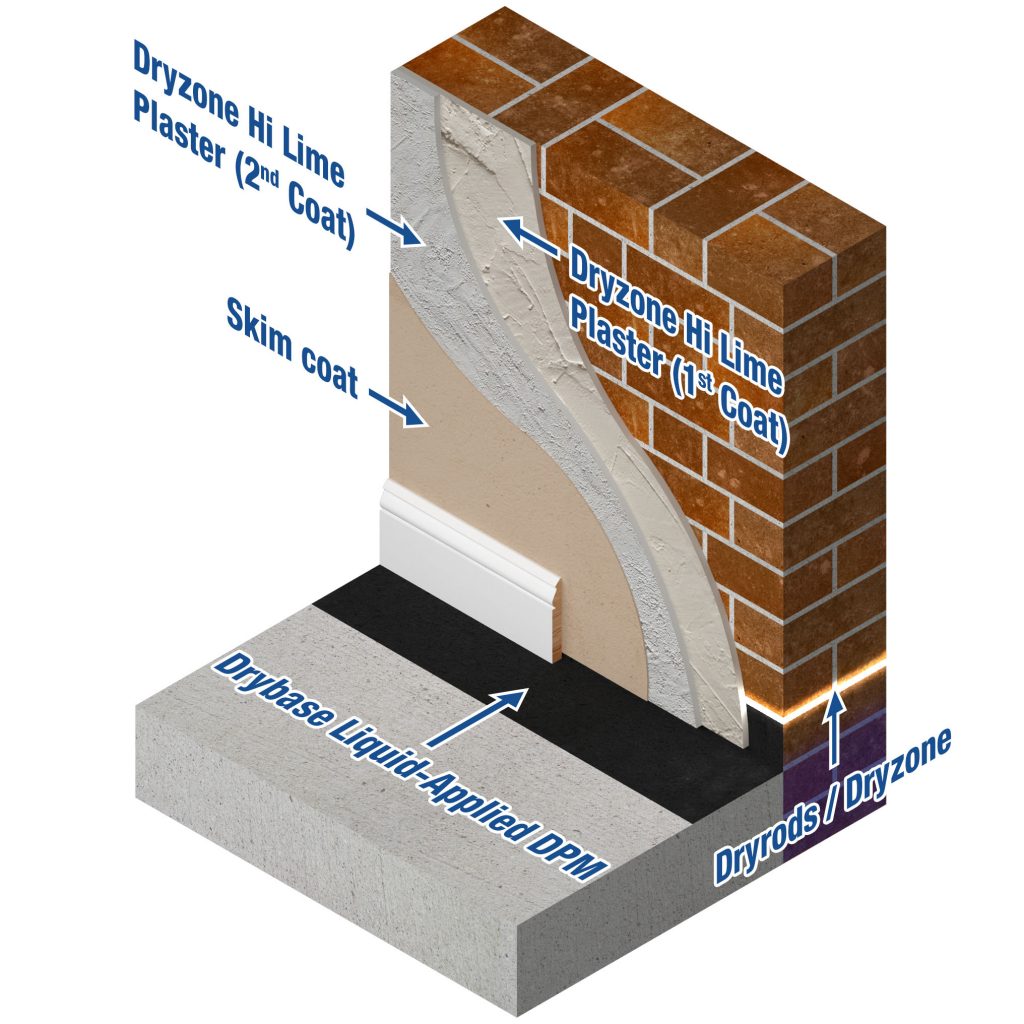
New plaster research points to alternatives to lime
While conservation officers and others are keen to ensure the use of traditional lime-based plasters and renders on listed and heritage buildings; research into new technology by Safeguard Europe – the UK’s leading specialist in damp-proofing and waterproofing technology – suggests better, more effective options are available.
The preference for lime plasters in conservation applications today is because of their perceived traditional material composition and, especially, breathability – allowing walls to attenuate moisture to the environment.
However, in the face of rising or penetrating damp, lime plasters can start to fail. This is especially the case where the dampness introduces salts into the plasterwork. Furthermore, new research shows that lime plasters are far from the most breathable of their kind; and modern hybrid ‘hi-lime’ or damp-resistant materials are far more effective.
In these tests, hi-lime plasters were shown to allow transmission of around 1.2kg/m 2 of water vapour over a fourteen-day period, compared to 0.85kg/m 2 for a traditional mix of 3:1 sand and lime and 0.35 kg/m 2 for 3:1 sand and cement. More interestingly, recently introduced proprietary damp-resistant and fast set plasters were also shown, over two weeks, to transmit 1.55 kg/m 2 and 1.48kg/m 2 of water vapour respectively.

Consequently, there is a need for internal plastering systems that are impervious to damp; while not creating the problems associated with a sand and cement system: condensation risk and vapour impermeability.
New ‘second generation’ plastering systems have been introduced that are more resilient to dampness and salts than traditional plastering methods. These modern systems are capable of being applied to walls that are still damp and can resist high levels of moisture and salt ingress. The make-up of these plasters means they have large pores and a high pore volume. This allows salts to form within the plaster rather than on the surface; and the high pore volume results in thermal resistance, reducing the risk of condensation.
Other properties include a low bond strength, ensuring that the plaster can easily be removed later without damaging underlying brickwork; high water vapour diffusion (breathability) and conformity to the EN998-1 CE Standard as ‘Renovation Mortars’.
While traditional plasters have been used on internal walls for thousands of years to create smooth, decorative surfaces – lime-based plasters were used in Jordan as long ago as 7500 BC, and clay and gypsum in ancient China and India – the orthodoxy around plastering in listed and conservation environments, save when special materials or skills are demanded; can now be effectively challenged: and in the best interest of heritage buildings too.
For further details of Safeguard’s advanced, high-performing hi-lime and damp- resistant plasters, visit the website.
Contact:
Safeguard Europe,
Redkiln Close,
Horsham,
West Sussex,
United Kingdom,
RH13 5QL
Phone: 01403 210204
Fax: 01403 217529
Visit Safeguard Europe's website
Visit Supplier's page
Latest news

25th April 2024
BMBI: Value sales in first two months were -3.4% down
The latest Builders Merchant Building Index (BMBI) report shows builders’ merchants’ value sales were down -4.7% in February compared to the same month a year ago.
Posted in Articles, Bathrooms & Toilets, Bathrooms, Bedrooms & Washrooms, Bricks & Blocks, Building Associations & Institutes, Building Industry News, Building Products & Structures, Building Services, Civil Engineering, Concrete, Cement, Admixtures, Drainage, Floors, Hard Landscaping & Walkways, Interior Design & Construction, Interiors, Landscaping, news, Paints, Paints, Coatings & Finishes, Plant, Equipment and Hire, Plumbing, Posts, Publications, Research & Materials Testing, Restoration & Refurbishment, Retrofit & Renovation, Sustainability & Energy Efficiency
24th April 2024
The lowdown on Origin’s New Soho Offering
Origin’s Soho External Door is the first launch in its new generation of products, setting a higher standard for the fenestration industry.
Posted in Access Control & Door Entry Systems, Aluminium Products, Architectural Ironmongery, Articles, Building Industry News, Building Products & Structures, Building Systems, Doors, Innovations & New Products, Posts, Restoration & Refurbishment, Retrofit & Renovation, Security and Fire Protection
24th April 2024
Mitsubishi Electric welcomes new code of conduct for smart appliances
Mitsubishi Electric welcomes a new code of conduct on energy smart appliances which the European Union (EU) announced yesterday at the Hannover Fair in Germany.
Posted in Air Conditioning, Articles, Building Industry Events, Building Industry News, Building Products & Structures, Building Regulations & Accreditations, Building Services, Exhibitions and Conferences, Facility Management & Building Services, Heating Systems, Controls and Management, Heating, Ventilation and Air Conditioning - HVAC, Plumbing, Retrofit & Renovation, Seminars, Sustainability & Energy Efficiency
24th April 2024
Hamworthy Heating expands CIBSE approved CPD modules with new hot water series
Hamworthy Heating, technical experts in commercial heating and hot water products, announce the expansion of its market leading CIBSE approved Continuing Professional Development (CPD) portfolio with the launch of three new learning modules.
Posted in Articles, Building Industry Events, Building Industry News, Building Products & Structures, Building Services, Continuing Professional Development (CPD's), Facility Management & Building Services, Heating Systems, Controls and Management, Heating, Ventilation and Air Conditioning - HVAC, Plumbing, Retrofit & Renovation, Seminars, Training
 Sign up:
Sign up: